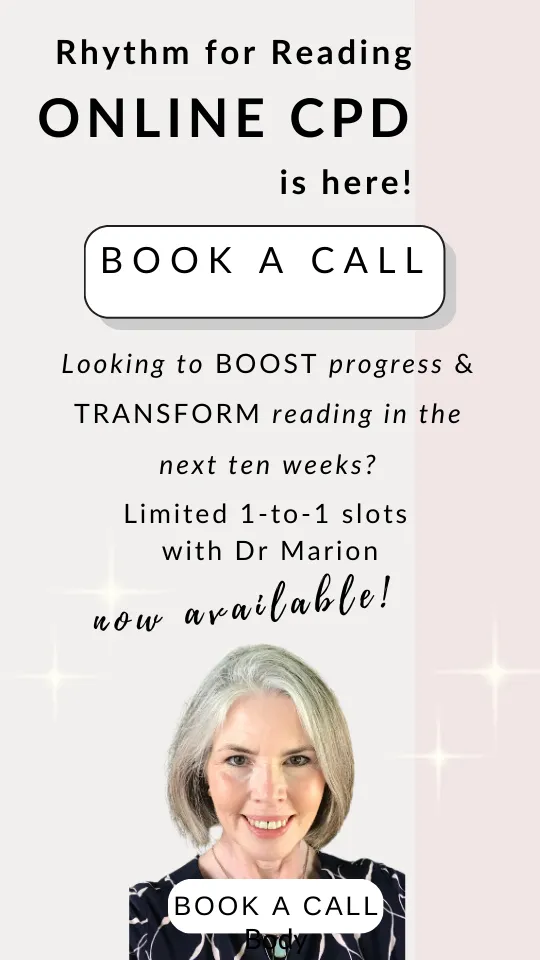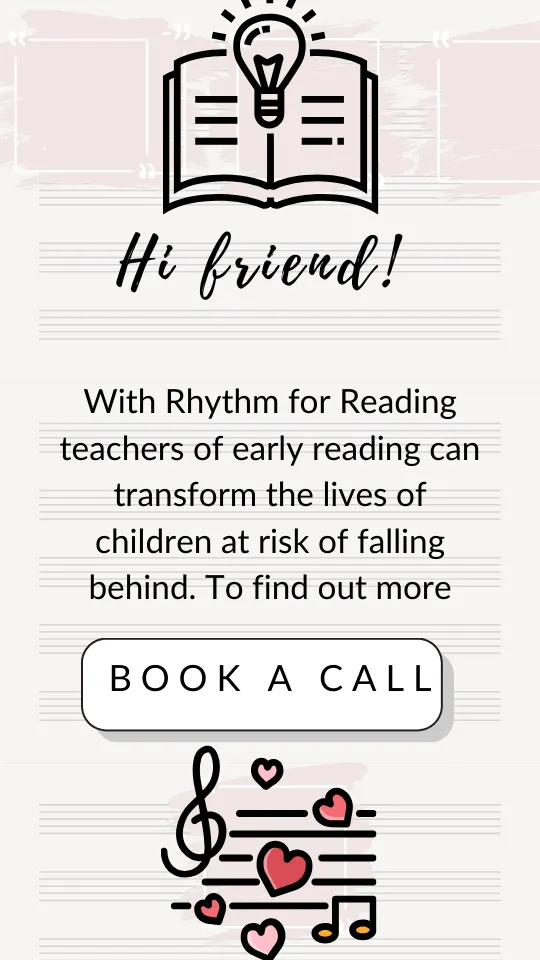Scanning ahead: Rapid progress from phonics to reading comprehension
Why would you want a reading programme that doesn’t use words?
Here’s a hint - it teaches children to scan ahead in their reading and this translates into improved fluency and comprehension.
In the summer of 2024, at the end of Year 6, thousands of children took an assessment which showed their attainment in reading at the end of their time at primary school.
Almost three quarters of them 74 per cent reached the expected standard - And of course this means that around a quarter of all the children who started secondary school in September 2024 did not have the level of reading that they would need to keep up with the class and the curriculum.
In this post I want to look at the single factor that teachers speak about when we talk about the difference between learning to read and reading to learn.
'Learning to read', and 'reading to learn'
Learning to read is hard for children when they haven’t grown up with books, when English is an additional language or when they haven’t really engaged enough with spoken language of any kind. Schools can help children to catch up with the other pupils by boosting their vocabulary, supporting their speech development and providing them with books and of course a structured phonics programme.
Reading to learn involves reading with automatic word recognition, reading fluency and a deeper level of engagement with the text. So a child who is able to read to learn, is capable of
learning and acquiring new ideas and perspectives from reading
enjoying the complexity of a mystery novel which involves deeper levels of engagement
building theories about what might happen in the plot.
Teachers say that being able to scan ahead is the key thing that children learn to do when they become fluent readers. The children who cannot scan ahead in their reading do not become fluent. There’s this very clear distinction between those who can and those who cannot scan ahead.
How do children transition from 'learning to read' to 'reading to learn'?
If teachers knew exactly how to support this transition, perhaps the year 6 results could look quite different at the end of the year. Now that we’ve reached the end of spring term and Rhythm for Reading results are in, teachers have said this:
They are scanning ahead while they read.
Children who were learning to read from phonics books and were not scanning ahead at the start of January are now reading chapter books and are scanning ahead in their reading, ten weeks later.
Their teacher told me that all of the children who were in the programme were now able to ‘scan ahead’, had moved from phonics books to reading chapter books. Their reading comprehension scores had soared, and she described their progress as beyond her expectations.
They had taken part in rhythm-based exercises in ten weekly sessions of ten minutes. Rather than reading words, they had been reading simple musical notes. In these sessions the children were learning to read the notes as rhythmic patterns and were anticipating what was coming up next in every musical phrase. They were having so much fun, reading in time with the background audio tracks and doing the actions that that they didn’t even notice how much they were learning.
Some of the children told me that they loved the hand actions, especially the ones which involved making swishing sounds, others loved the ideas and the stories behind the music. For example, have a story about a dinosaur footprint that turns up in the local high street and the children also enjoy the music that portrays dolphins that dance especially that there is an exuberant splash at key moments. In the music there are rhythmic patterns that lock the children into rhythmic precision while they read and this helps them to trust that the process of reading is something that can feel fun but also comfortable and rewarding.
Scanning ahead
To my mind, 'scanning ahead' and 'scanning the page' both support reading comprehension, but they are completely different skills.
'Scanning the page' involves finding a key word and skipping to the key point in the text. This is a matter of choice - it involves choosing the right strategy. But when children are 'scanning ahead' while they read aloud, they read with fluency and 'scanning ahead' is not a matter of choice - it happens automatically. So this means that as a skill, it is pretty elusive and -important as it is - is difficult to teach.
‘Scanning’ is a speed reading technique used by adults. It involves casting your eyes down the centre of the page to pick up the gist of the meaning. The value of this lies in covering a large amount of text at speed - but research studies indicate that this technique doesn't result in better understanding.
'Scanning ahead' is a skill that develops effortlessly for some children, and over a period time for others, and this always happens at a subconscious level. In other words, itt is not a reading strategy that we can develop at will.
In writing this, I found myself wondering why we would develop the skill to scan ahead as we read.
Does the art of storytelling - with drama, suspense, mystery and cliffhangers woven together somehow persuade children to scan ahead as they read?
Does the mind scan the environment all the time for real life drama and only sometimes co-opt this skill for reading if we are willing to suspend our grip on reality?
Does the child need to feel safe, before they can scan ahead while they read?
Does the human visual processing network need to see the words not as marks on the page but as messengers, before scanning ahead can begin?
If you would like to hear more about scanning ahead, you may find the fifteen minute video resonates. For instance, if you are interested in the important topic of eye movements I refer to the work of researchers and reading specialists such as Maryanne Wolf in the video and discuss fixations as well as scanning ahead.I cover the activities in the Rhythm for Reading sessions and how these support the development of fluency and comprehension. If you would like more information please sign up for a webinar or ask a question on the contact page.
Enjoy this post? Why not keep reading...







